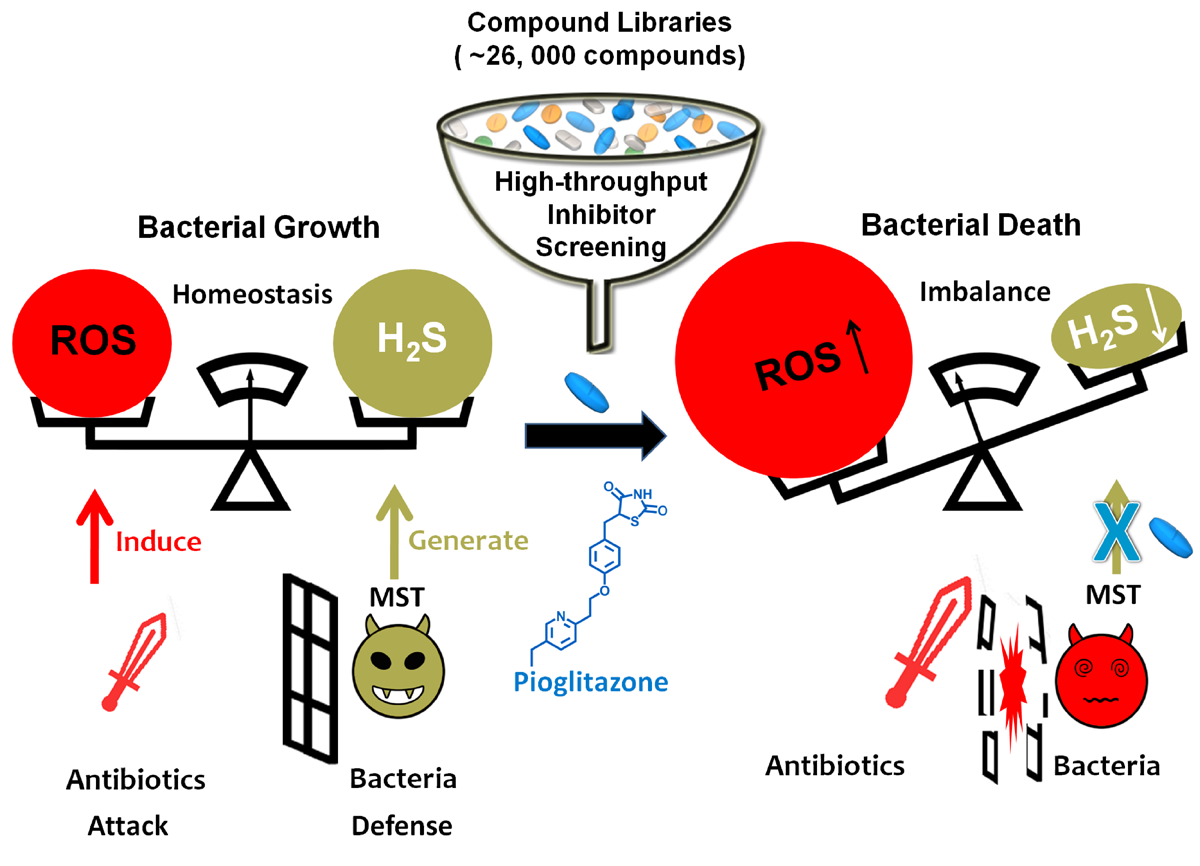New inhibitors of bacterial hydrogen sulfide gas producing enzymes can synergize antibiotics
Recently, Cell Chemical Biology, a subsidiary of Cell, online published the latest research work on inhibitors of hydrogen sulfide gas generating enzyme by Wu Fang's group at Shanghai Center for Systems Biomedicine of Shanghai Jiao Tong University. This work has constructed a high-throughput drug screening model for E. coli 3-Mercaptopyruvate Sulfurtransferase (eMST), and obtained the first bioactive inhibitor of eMST from 26,000 compounds through this HTS assay, and systematically studied the molecular mechanism of the agent and the mechanism of action in cellulo,and revealed that this inhibitor can enhance the antimicrobial effects of known antibiotics.

The antibiotic resistance of bacteria is a global problem that needs to be solved urgently. However, only a few antibiotic drugs have been approved for marketing in the past 30 years. Therefore, there is an urgent need for drug leads with new mechanisms and new targets. The latest research shows that H2S-producing enzymes can antagonize the antimicrobial effects of antibiotics by producing H2S. However, bacterial MST targeted inhibitors have not been reported so far. This has become one of the difficulties in proof-of-concept "MST as a new drug target for the treatment of antibiotic resistance bacteria."
This study is based on our previously developed 192-tandem-well-plate assay and long-term accumulation in the field of the inhibitors of H2S generating enzymes (see Chem. Comm. 2013; Cell Death and Disease 2018; J. Med. Chem. 2019 and The authorized 2018 Chinese invention patent CN201310467388.1), through high-throughput screening, discovered the first inhibitor of eMST-pioglitazone (a FDA-approved drug for the treatment of type II diabetes). Importantly, this inhibitor has good selectivity, which and it does not affect other oxidoreductase such as the hMST. Through a combination of multidisciplinary methods, including enzyme kinetics, molecular mutations, metabolite targeted mass spectrometry detection, reactive oxygen species RoGFP2 real-time probe, and bacterial CRISPER/Cas9 gene editing and so on, we have systematically confirmed the on-target inhibition, effective and molecular mechanism of pioglitazone in vitro and in cellulo. This research work provided the first selective inhibitor and small molecule probe tool for eMST, and systematically explained the molecular mechanism of the interaction between the enzyme and the inhibitors, and confirmed the feasibility of eMST as a drug target in the treatment of antibiotic resistance bacteria, providing "a new structure drug lead" and "new target" for the treatment of bacterial resistance.
The article entitled "Discovery of an inhibitor for bacterial 3-mercaptopyruvate sulfurtransferase that synergistically controls bacterial survival. https://doi.org/10.1016/j.chembiol.2020.10.012" was published online on November 12, 2020. Shanghai Jiaotong University is the first signing unit/communication unit, Giorgia Croppi, a doctoral student of the Institute of System Biomedicine, is the first author, and Zhou Yueyang, a senior experimenter, is the second author. Associate Professor Yu Jing from the School of Life Sciences and Technology and Professor Wu Fang from the Institute of Systems Biomedicine are the corresponding authors. This work was funded by the National Natural Science Foundation of China and the Shanghai Municipal Natural Science Foundation, and was greatly assisted by the research group of Professor Ruan Benfang of Zhejiang University of Technology.

Link to the paper: https://www.cell.com/cell-chemical-biology/fulltext/S2451-9456(20)30428-1